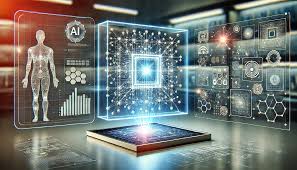-
Fil d’actualités
- EXPLORER
-
Pages
-
Blogs
-
Courses
-
Film
Computer Vision: The Silent Partner in Human Decision-Making

In our increasingly digital world, the ability to “see” has become one of the most powerful forms of intelligence—not just for humans, but for machines too. Computer Vision (CV) , a branch of artificial intelligence, is often described as the technology that enables machines to interpret images and videos.
But beyond this surface definition lies something far deeper - computer vision as a partner in human perception and decision-making . It's not just about enabling machines to see; it's about teaching them to understand and collaborate with us.
The Evolution: From Recognition to Reasoning
Computer vision started as a simple concept — detect an object, recognize a face, or classify an image. Early systems were task-oriented and reactive, limited to identifying what was visible.
Today, however, AI vision systems do more than recognize — they reason . Modern models analyze context, detect intent, and draw inferences that help humans make faster, more accurate decisions.
For instance, in healthcare, a CV algorithm can flag abnormalities in X-rays or MRI scans, helping doctors focus on high-risk cases sooner. In manufacturing, vision-based quality control systems detect microscopic flaws invisible to the human eye.
These applications don't just assist professionals — they elevate their judgment . The machine doesn't replace the expert; it enhances the expert's vision.
The Trust Paradox: Seeing Is Believing — Or Is It?
As computer vision becomes more integrated into business workflows, one challenge has emerged: trust .
Can we trust what machines see? Can we trust how they interpret what they see?
Trust in vision-based AI depends not on how accurate the model is, but on how transparent it is. When an algorithm identifies a pattern, decision-makers must understand why . This is where explainable computer vision comes in - systems that not only provide results but also show the reasoning behind them.
Responsible computer vision development companies now build models that visualize how an AI reaches conclusions — highlighting key areas in an image that influenced its decision. This level of interpretability bridges the gap between machine insight and human understanding, creating a new kind of trust between man and machine.
Human Perception and Machine Perception: Two Worlds Converging
Humans and machines perceive differently. Humans see meaning; machines see data.
When these two modes of perception combine, something extraordinary happens: collective intelligence . A doctor's experience, a driver's instinct, or a designer's creativity amplified by the precision of computer vision creates outcomes that neither could achieve alone.
For example, in autonomous vehicles, computer vision continuously monitors the environment, interpreting traffic signals, pedestrians, and obstacles in real time. Yet, human oversight remains essential for interpreting unpredictability - intuition, emotion, and ethics.
The future of perception lies not in choosing between human and machine vision but in combining both - the empathy of human sight with the precision of AI.
The Ethical Lens: Seeing Responsibly
Every image captured and analyzed by a vision system represents a piece of someone's reality. That's why modern computer vision services are increasingly guided by ethical frameworks.
Companies are adopting privacy-by-design principles—blurring faces, anonymizing data, and ensuring that AI systems remain unbiased. Vision without ethics risks becoming surveillance; vision with ethics becomes insight .
True innovation in computer vision doesn't lie in teaching machines to see more clearly — it lies in teaching them to see responsibly .
Future: From Vision to Understanding
As we move toward an AI-powered world, computer vision will be the eyes of digital transformation . From autonomous logistics to emotion-aware customer service, it will enable a new kind of interaction between humans and technology - one based on understanding, not just observation.
But the real success of computer vision won't be measured by how perfectly machines recognize objects — it will be measured by how deeply they understand the context and how ethically they assist in human decisions.
In essence, computer vision is evolving from a tool into a thinking collaborator - one that helps us see the world not just as it is, but as it could be.
- Art
- Causes
- Crafts
- Dance
- Drinks
- Film
- Fitness
- Food
- Jeux
- Gardening
- Health
- Domicile
- Literature
- Music
- Networking
- Autre
- Party
- Religion
- Shopping
- Sports
- Theater
- Wellness


